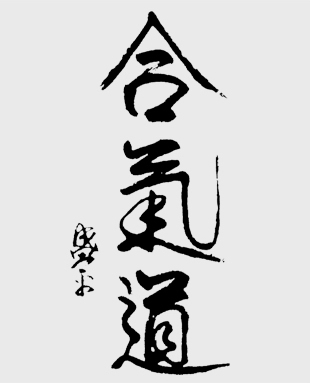

| About Aikido |  |
|
|
Aikido is a modern martial art developed by Morihei Ueshiba (1883-1969) following strict spiritual training and deep contemplation of the true meaning of traditional budo. Aikido does not counter force with force, but aims to peacefully resolve violent attack without harm to the attacker, through the two principles of irimi (entering) and tenkan (turning). Thus, Aikido is considered a martial art for modern times, and also a "friendly" martial art.
There are no competitions in Aikido. Technical competence is achieved by repeated practice with partners, aiming at physical and mental development. Anyone may practice Aikido. Practicing Aikido is good for the health, and also helps one to face life in an active, confident, and natural way.
Aikido practitioners are mixed in terms of age, sex, occupation, and nationality. Thus, an Aikido dojo also promotes international friendship and deepens mutual understanding. There is no end to Aikido training: once one has begun, one should continue to train without tiring or slacking off, in pursuit of one's own Aikido spirit. Persistence in training is the first step to improvement, and an important condition for practicing Aikido.
|
| Our Dojo's Principles of Aikido Training |
|
Aikido is an improvement or sublimation of traditional Japanese martial arts (mainly jujitsu and fencing) with some influence from traditional Chinese martial arts. "Fighting" applications gradually became less central in the development of Aikido techniques. Thus, it is considered suitable for all ages. Nonetheless, each technique can be dangerous if practiced incorrectly or inattentively. So we promise not to use Aikido, even having learned its secrets.
When in the dojo with everyone around you practicing Aikido, the situation is like a real battle. Someone might jump or be thrown in front of you at any time. As either the defender (tori) who throws, or the attacker (uke) who is thrown, one must maintain clear awareness of one's surroundings to avoid injury. Tori should only throw uke into a safe place, even if doing so necessitates interrupting his/her own practice. Also, Aikido is a martial art, not a dance. Each movement should be practiced with true concentration as in a life-or-death duel. However, Aikido has no duels or contests. There is no need to compare oneself to others; there is no competitive thinking.
Providing some resistance to your partner (rather than completely following along) is an acceptable form of practice. However, when practicing waza (fixed techni- ques) with an experienced practitioner, resisting strongly is meaningless. It is difficult to throw your partner with any waza if your partner knows the waza in advance and resists strongly. As tori, in a real fight, one could respond to resistance by kicking, biting, etc. rather than sticking solely to the predetermined technique. Over-insistence on "realistic resistance" can result in inattention to those around one and injury to oneself or others, defeating the purpose of our training. Also, our dojo forbids the use of techniques from outside of Aikido for the sake of "realistic fighting". Such behavior can also lead to injury.
"What should we do in a real fight?" is a common question. Our dojo hopes that the words "real fight" will not be used lightly. On a large scale, a real fight is a war; on a small scale, it is a street fight. If one were in a street fight, one could already have been shot or stabbed in the time it takes to say "grab my wrist" during training. We believe that Aikido training can develop your sense to avoid danger, as well as your intuition and perception. Thus, it is important to persist in training.
We hope everyone can practice Aikido with a relaxed and happy mind!
Shanghai International Aikido Club |

